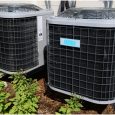The U.S. residents make the highest number of consumers of HVAC systems. Up to 75% of homes in the US use air conditioners thanks to the scorching heat. Unfortunately, the heater can stop working at any time, causing a lot of inconveniences.
Therefore, it’s important to have some HVAC troubleshooting guide by your side just in case the unexpected happens. Here is a DIY HVAC troubleshooting to help you whenever you get stuck.
HVAC Troubleshooting Guide for Short-Cycle
If your filter is clogged, you’ll experience the short-cycling issue. This is because your airflow will be blocked, causing the unit to overheat. When this happens, your unit will shut down before the full heating or cooling cycle.
The good news is that this is a small problem that you can easily troubleshoot without spending money on professionals. The easiest way to do this is by simple cleaning and replacing your air filter.
Check Your Thermostat
When your thermostat has an issue, your AC might not turn on as usual. When experiencing this, the first thing to do is to turn it down to the lowest setting. If your AC doesn’t kick back on, then, you may need to replace or recalibrate your thermostat.
Forget about the recalibration part if you have an old dial-type. These types are less efficient and will give you a lot of trouble trying to calibrate. You’ll be better off upgrading to the new smart thermostats.
If you’re experiencing trouble programming your digital or smart thermostats, your manual might help. This will help you figure out if everything is in their correct setting. If you still can’t troubleshoot after consulting the manual, then it’s high time you call a pro.
Check if the Condensing Unit Is Running
Sometimes, you might experience HVAC system problems because your outdoor air conditioning is not running as required. The only way to be sure and make corrections or rule out problems is to check. Before troubleshooting, check out more information regarding condenser units on this site: https://www.schneidermechanical.com/what-does-your-hvac-systems-condenser-unit-actually-do/.
Check the circuit breakers located in the circuit breaker box. You’ll most likely find this mounted to the outside wall. Ensure they’re ON.
Check the ‘disconnect switch’ in the outdoor unit and ensure it’s in the ‘ON’ position. The disconnect switch of your AC is also located in the outdoor unit. If all these are switched off, connect them back on and check if your HVAC is back to its normal working condition.
Your AC Is Heating Instead of Cooling
When your AC is behaving more like a heater, you should start by checking your thermostat. Maybe something bumped into it, forcing it to switch to ‘heat’ mode. Or you set it to ‘auto’ mode.
When these two happens, your AC will be running as usual but not cooling. The fun will be rotating but blowing warm air. You wouldn’t want such an experience on a hot day.
If you set your thermostat back to cool, but it continues to blow warm air, maybe you’re dealing with a faulty compressor. It might not be changing the refrigerant’s temp or transferring heat.
Another issue causing this problem might be a refrigerant leak. This can be dangerous if you’re using the R-22 type (Freon). Though 98% of HCFCs are banned, some may still use those that deplete the ozone substance.
Any AC with the manufacturing date before December 2014 must be using Freon. Freon leaks can cause low refrigerant levels, which then result in your AC blowing warm air instead of cold. Call a professional to do the troubleshooting before you can suffer refrigerant poisoning.
Your AC Is Not Turning On
When your AC has completely turned off and refuses to turn back on, there must be trouble with your power supply cord. This code might be disconnected or just loose. Also, confirm if your circuit breaker has tripped and reset it.
Make sure your power supply cord has no damages or fraying. Some rodents might have chewed it, causing a disconnection.
If the cord and the circuit breaker are all normal, you might have a problem with the wall outlet. Unplug the power cord of your AC or high-voltage equipment. If the equipment doesn’t work, your outlet may be the problem.
If the equipment works perfectly, then, your AC might have another problem. It may be a failed thermostat, a blown fuse, or a damaged motor. For any of these problems, make sure you get a professional for troubleshooting HVAC issues.
Troubleshooting Your Ductwork
Sometimes your HVAC system fails to blow air that covers the entire house. Some parts of your home may be getting enough cold air, but other parts may not. The ductwork is responsible for supplying air throughout your home, and if you can’t get enough, then it’s probably the culprit.
Sometimes some rodents caused messy tears, or you experienced some improper work done around it. The holes may allow cool air to go through the inside of your walls.
Your system may work harder than normal to provide the air needed for cooling the entire house. If the problem persists, you may notice your electric bills going up more than normal. Repair the holes before this problem gets completely out of hand.
You Don’t Need to Call a Professional for Minor Fixes
Sometimes your AC problems may be as simple as just turning on the ‘ON’ and ‘OFF’ switch. You don’t need to call a professional every time you experience a problem, especially now that you have this HVAC troubleshooting guide.
Well, if the above troubleshooting tips don’t work, don’t force it as it can cause extreme damage to your HVAC system. Call HVAC maintenance guys around your area and let them do the professional repairs.
If you need more help with your home appliances, our professionals are here to offer the help needed free of charge. Just browse through the site, and you’ll get some help from various articles here.




